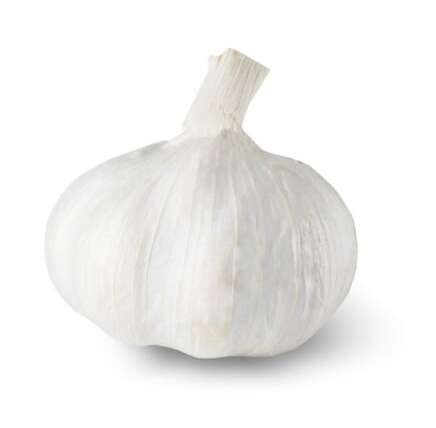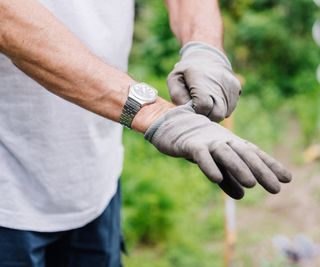All rose gardeners want their roses to grow into healthy, mature plants. We nurture them for years, hoping for abundant blooms that perfume our garden and flood it with color. Unfortunately, the time and expense you’ve invested in your roses can be wiped out by a lethal virus. Rose Rosette Disease (RRD) is spread by the microscopic eriophyid mite Phyllocoptes fructiphilus Keifer. These tiny virus vectors generally travel by wind up to 2 miles away and can infect new roses via grafting and mechanical transmission.
First documented in Manitoba, Canada, in the 1940s, RRD is widespread in 33 states. There is no cure for the disease, and roses die 2 to 5 years post-infection. Since 2015, researchers at Texas A&M and the University of Tennessee have collaborated with international experts to identify and breed roses with genetic resistance. In the meantime, we need to know what to look for and how to reduce its transmission rate.
In this article, I’ll share RRD symptoms, prevention strategies, and what to do if you suspect you’ve found infected roses in your garden or neighborhood. Let’s get started!
Identification
The main symptoms are vigorous red shoots, distorted leaves, bushy clusters, and defoliation.
It can be difficult to differentiate between healthy new growth and the symptoms of Rose Rosette Disease. Many panicked gardeners share pictures of suspected infection, only to be reassured that their rose is pushing out normal new shoots and canes. Fortunately, there are some key signs to look for.
Critical indicators of RRD are:
- Vigorous lateral shoot growth with red pigment
- Distorted, narrow red leaves
- Bushy clusters of new shoots, branching out from one location (these clusters look like a broom, earning the nickname “Witch’s Broom”)
- Elongated, flattened, succulent canes
- Hyper-thorniness (excessive thorns)
- Tight bud clusters in the shape of a rosette. If they open at all, they are malformed.
- Defoliation and winter dieback (infected roses are more susceptible to winter damage and other diseases like black spot).
Healthy new rose shoots and canes are often red and thornier than older growth. So how can you be sure you’re looking at Rose Rosette Disease? Roses with RRD display unsightly growth that looks distinctly different from the rest of the plant. To determine if the new growth is RRD, compare it to the rest of the mature, normal shrub.
Compare the new growth to the old, and ask yourself:
- Do the leaves on the new growth have the same general shape as the mature growth? (healthy new growth is often red, but RRD foliage looks deformed and elongated).
- Are the canes the same shape (rounded vs. flattened)?
- The new canes may have more thorns, but is the structure of the thorns the same (i.e., pointed down, up, or straight)?
- Look at the plant as a whole. Does the new growth have the same general structure as the rest of the plant, or does it stick out like a sore thumb?
If the new shoots resemble the rest of the plant in shape and structure, it’s most likely healthy new growth and no cause for concern. If you’re still unsure, here’s what to do:
- Take pictures of the whole plant as well as close-ups of the suspected infected growth.
- Upload them to the reporting page of Roserosette.org
- The organization will follow up with you to confirm the presence of the disease.
- If the disease is confirmed, react immediately.
Treatment
 To prevent the spread of RRD, remove the entire rose, burn or discard it, clean the site, and observe and remove infected plants.
To prevent the spread of RRD, remove the entire rose, burn or discard it, clean the site, and observe and remove infected plants.
Sadly, the currently available treatment measures (like miticides) haven’t effectively reduced infection rates. The disease is systemic, meaning it affects all plant parts. Pruning out the symptomatic growth will not save the rose or prevent the disease from spreading to other plants in your garden (or your neighbor’s!).
Instead, you should:
- Remove the entire rose, including the root ball.
- Once removed, burn the rose or throw it away.
- You may want to take the additional precaution of putting it in a plastic bag so mites don’t fall during transfer.
- After removing the rose, make sure to clean up the site thoroughly.
- Phyllocoptes fructiphilus Kiefer can live on dropped foliage or other plant matter, so you must pick up and dispose of all debris surrounding the site of the removed rose.
- After one week, you can safely plant a new rose in the same spot, but you may wait longer if desired.
- The mites only survive for up to 5 days with no host, so 7 days is a good guideline if you wish to replant.
- Carefully observe all other roses in your garden for signs of RRD.
- If you find more infections, immediately dig up and dispose of infected plants.
Prevention
 Focus on preventing disease by keeping roses healthy through proper care.
Focus on preventing disease by keeping roses healthy through proper care.
Researchers are working to identify miticides and predatory biocontrols that the home gardener can use to control RRD effectively. Until we have an effective treatment, we must actively prevent the disease as much as possible.
There’s much we can do to slow down RRD. Above all, keep your roses healthy. Like all insect vectors, eriophyid mites are more likely to strike stressed plants. Maintain robust, happy shrubs with good routine care, like pruning, fertilization, spacing for airflow, plenty of sunlight, and regular deep watering.
What are the other preventative steps you can take to combat RRD?
Monitor
 Regularly monitor rose bushes for disease signs.
Regularly monitor rose bushes for disease signs.
Observe your rose bushes frequently for signs of disease. The frequently maligned KnockoutⓇ family is often blamed for the RRD spread. Rather than a fault of the roses themselves, their increased incidence of infection appears to result from neglect and lack of recognition of RRD symptoms.
They are a favorite of landscapers for commercial sites, where they aren’t always carefully maintained and observed. These landscape beds then became reservoirs for the virus.
Buy From Reputable Sources
 Purchase from reputable vendors and inspect shipped specimens carefully for signs of disease before planting.
Purchase from reputable vendors and inspect shipped specimens carefully for signs of disease before planting.
Purchase roses from high-quality local nurseries or reputable vendors that specialize in them. The staff will know what to look for and is less likely to sell infected roses. Plants can be asymptomatic for up to one year, however, so the presence of disease is not always the vendor’s fault.
If a rose is shipped to you, especially from a long distance or a location with high rates of RRD (currently, the eastern US is most heavily impacted), thoroughly inspect it upon receipt before planting. If you’re not sure the new rose is healthy, consider isolating it from the rest of your roses to observe it for a while. Contact the distributor with any concerns.
Protect the Plants in Your Garden
 Create a windward barrier, avoid leaf blowers, interplant with companions, practice sanitation, and prune.
Create a windward barrier, avoid leaf blowers, interplant with companions, practice sanitation, and prune.
Shelter your plants if possible. Evidence shows that a barrier on the windward side of your plants reduces the rates of mite spread. Consider placing your roses near a fence, the side of your house, or against a tall hedge.
When cleaning up your yard, avoid leaf blowers, which rapidly spread mites through the air to new plants.
Interplant your rose bushes with companion plants. While this is not a guaranteed preventative, mixed plantings are good practice. Planting different species between rose bushes slows the spread of all pests that prefer roses as hosts while offering repellant and masking benefits.
Practice good sanitation in the garden. Always use clean, sharpened garden tools, and sanitize them in between plants. This will reduce the likelihood of mechanical virus transmission. Clean up any fallen plant matter whenever you prune your rose bushes, as this debris can harbor disease or serve as a host.
Prune off old buds and hips (the oval or round fruit containing seeds) in late winter or early spring. Eriophyid mites generally overwinter in them, so a good prune before the plant pushes out new growth may remove the pests.
Eliminate Known Hosts
 Remove multiflora species, a common host of RRD, from natural areas to reduce disease spread.
Remove multiflora species, a common host of RRD, from natural areas to reduce disease spread.
You know that roses with RRD symptoms must be removed entirely from the garden. But did you know you can help reduce the spread in your area by looking for hosts in natural areas and woodlands?
Multiflora roses (Rosa multiflora) are particularly susceptible to the disease and are a common host of RRD. This rose native to Asia has spread to wild areas of North America and is considered a noxious weed in many states.
Multiflora types are large, bushy shrubs that grow into dense thickets. Blooms are 5-petaled and single, with exposed bright yellow stamens. They’re usually white but sometimes light pink. Rosa multiflora can be differentiated from native roses by the fringed stipules where the base of the leaves meets the stem.
If you are confident in identifying a multiflora rose, and it is not illegal to do so, dig it up and remove it if possible. This is a good project for invasive plant removal groups and will help reduce the spread of RRD.
Spread the Word
 Watch for RRD in your community, notify owners, and offer help with removing and reporting infected plants.
Watch for RRD in your community, notify owners, and offer help with removing and reporting infected plants.
Be on the lookout for RRD in your neighborhood and community. If you see symptoms, notify property owners and emphasize the importance of prompt removal. If you’re able, offer to help remove and report infected plants.
Final Thoughts
Researchers are making rapid progress in fighting Rose Rosette Disease. Scientists have already identified a gene that makes roses less susceptible to the virus. Their continued research will eventually result in the development of a new, more resistant generation of roses. Until then, we all need to do our part in reducing the spread of RRD.
The best prevention strategy is knowledge and observation. Monitor your bushes and educate others. Together we can ensure that the Queen of Flowers still flourishes in our gardens!




